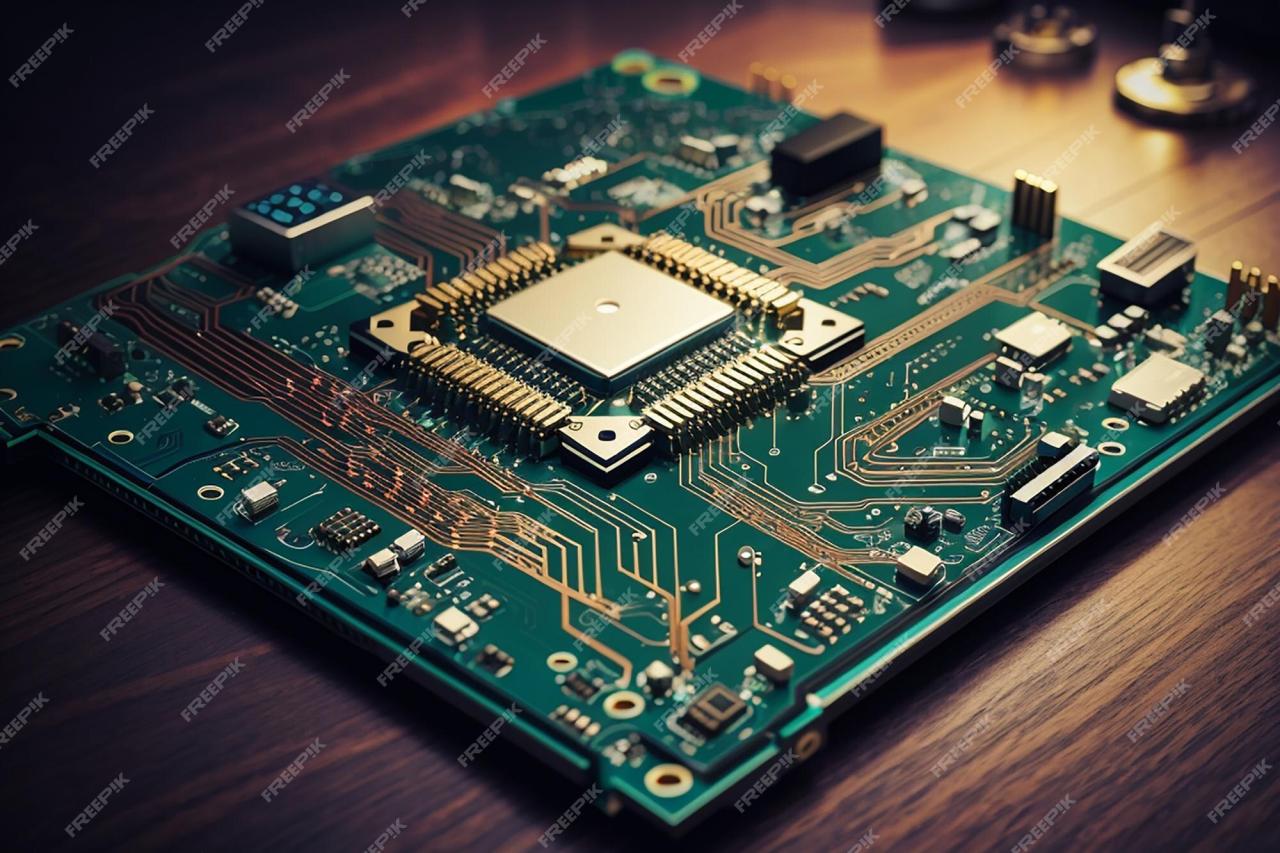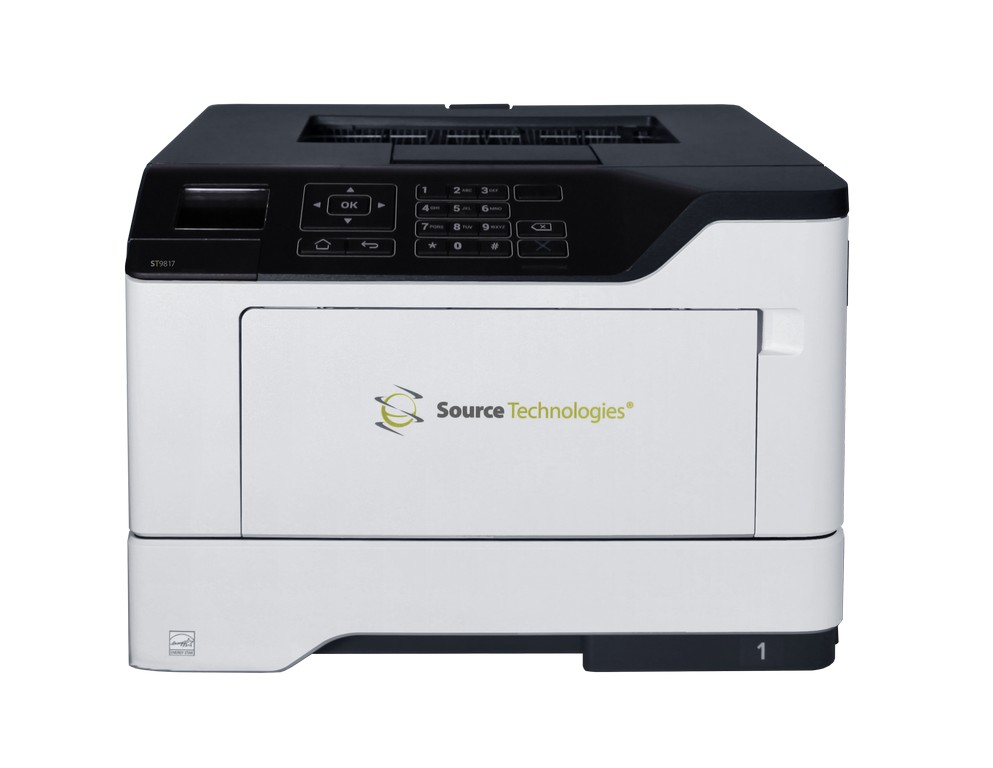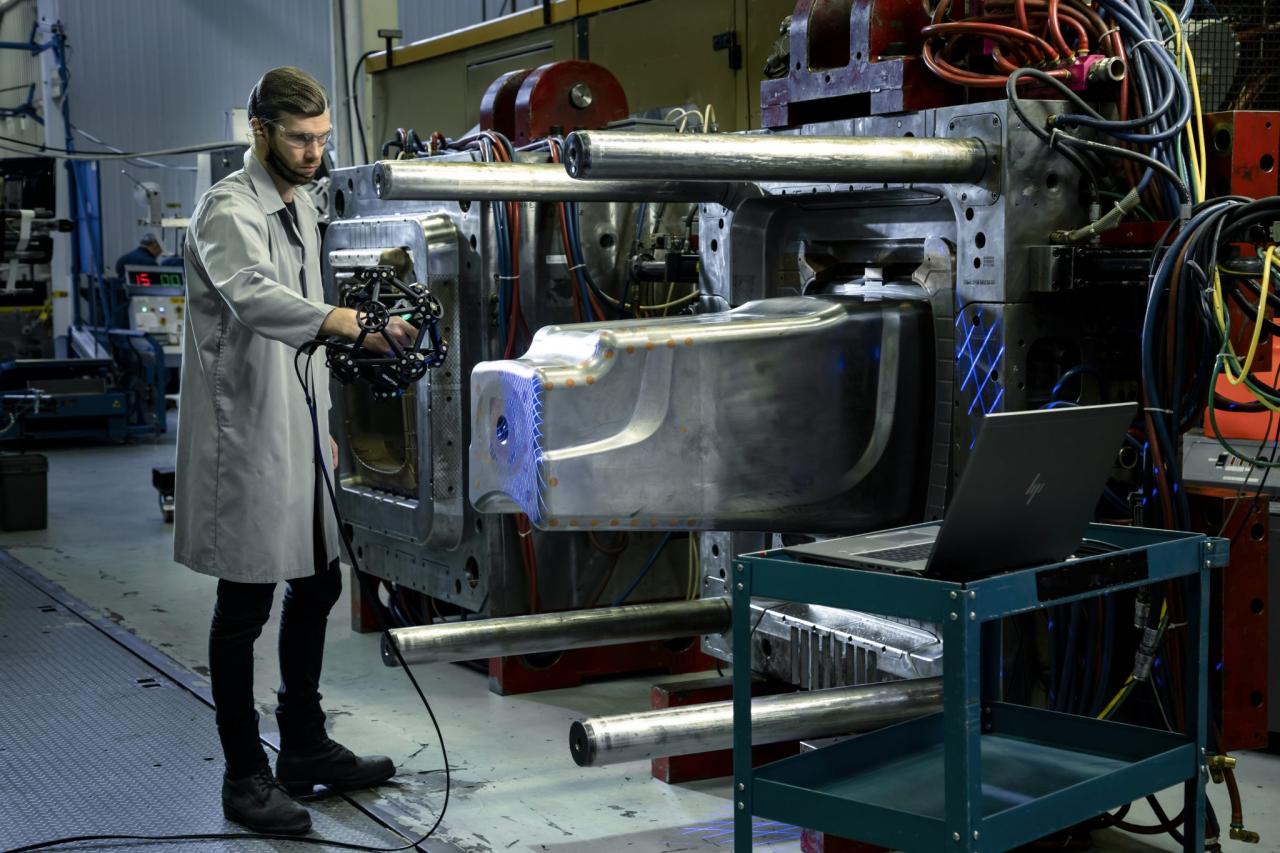Innovative Circuit Technology: Shaping the Future
Innovative circuit technology is revolutionizing the world around us, pushing the boundaries of what’s possible in electronics and beyond. From the tiny transistors in our smartphones to the powerful chips […]

Innovative circuit technology is revolutionizing the world around us, pushing the boundaries of what’s possible in electronics and beyond. From the tiny transistors in our smartphones to the powerful chips driving artificial intelligence, circuits are the backbone of our modern world. This exploration delves into the fascinating evolution of circuit design, exploring the groundbreaking advancements that are shaping our future.
The journey into innovative circuit technology unveils a world of miniaturization, where circuits are shrinking in size while increasing in complexity. This miniaturization, coupled with the integration of multiple components on a single chip, has led to the development of powerful devices that are transforming industries and impacting our daily lives.
Evolution of Circuit Technology
The journey of circuit technology is a fascinating chronicle of innovation, marked by groundbreaking advancements that have revolutionized our world. From the early days of simple circuits to the complex integrated circuits of today, this evolution has been driven by a relentless pursuit of miniaturization, efficiency, and performance.
Early Developments and the Dawn of Electronics
The foundation of modern circuit technology was laid in the late 19th and early 20th centuries with the discovery of fundamental principles of electricity and magnetism. Key milestones include:
- 1873: James Clerk Maxwell’s theoretical framework for electromagnetism laid the groundwork for understanding and manipulating electrical phenomena.
- 1876: Alexander Graham Bell’s invention of the telephone demonstrated the potential of electrical communication.
- 1879: Thomas Edison’s incandescent light bulb marked the beginning of electrical lighting, a transformative invention that illuminated homes and cities.
- 1904: John Ambrose Fleming’s invention of the vacuum tube, the first electronic amplifier, paved the way for radio and television.
These early inventions, coupled with the development of materials like copper wire and insulators, enabled the creation of simple circuits that powered basic electronic devices.
The Transistor Revolution and the Rise of Integrated Circuits
The invention of the transistor in 1947 by William Shockley, John Bardeen, and Walter Brattain at Bell Labs marked a pivotal moment in the history of circuit technology. Transistors, much smaller and more efficient than vacuum tubes, revolutionized electronics by enabling the creation of smaller, more powerful, and more reliable devices.
- 1958: Jack Kilby’s invention of the integrated circuit (IC), also known as the microchip, further revolutionized circuit technology. ICs integrated multiple transistors and other components onto a single silicon chip, paving the way for miniaturization and increased complexity.
- 1960s: The development of the metal-oxide-semiconductor field-effect transistor (MOSFET) led to the creation of even smaller and more efficient transistors, further driving miniaturization.
- 1970s: The advent of large-scale integration (LSI) and very-large-scale integration (VLSI) enabled the creation of complex circuits with millions or even billions of transistors on a single chip. This led to the development of microprocessors, microcontrollers, and other advanced electronic devices.
Miniaturization and Integration: Transforming Circuit Technology
The impact of miniaturization and integration on circuit technology has been profound. These advancements have led to:
- Reduced size and weight: Devices have become significantly smaller and lighter, making them more portable and convenient.
- Increased performance: Smaller transistors and denser integration allow for faster processing speeds, higher data storage capacities, and enhanced functionality.
- Lower cost: Mass production of ICs has significantly reduced the cost of electronic devices, making them more accessible to a wider population.
- Increased complexity: The ability to integrate millions of transistors on a single chip has enabled the creation of incredibly complex systems, including smartphones, computers, and other sophisticated devices.
Miniaturization and integration have not only revolutionized electronics but also paved the way for new technologies, such as artificial intelligence, machine learning, and the Internet of Things.
Emerging Trends in Circuit Design
Circuit design is constantly evolving, driven by the relentless pursuit of miniaturization, increased functionality, and improved performance. These advancements are fueled by emerging trends that are reshaping the landscape of electronics and influencing numerous industries.
Flexible Circuits
Flexible circuits are revolutionizing the way electronic devices are designed and manufactured. These circuits are printed or etched onto thin, flexible substrates, such as polyimide or polyethylene terephthalate (PET). This allows them to bend, fold, and conform to complex shapes, making them ideal for applications where traditional rigid circuits are impractical or impossible.
Flexible circuits offer numerous advantages, including:
- Increased design flexibility: They can be shaped to fit any form factor, enabling the creation of innovative and compact devices.
- Enhanced durability: Their flexibility makes them resistant to damage from bending, twisting, and vibration.
- Reduced weight and size: Flexible circuits are thinner and lighter than traditional rigid circuits, making them ideal for portable devices.
- Improved performance: The flexibility of the circuits allows for more efficient heat dissipation, leading to better performance and reliability.
Examples of flexible circuit applications include:
- Wearable electronics: Flexible circuits are used in smartwatches, fitness trackers, and other wearable devices that need to conform to the human body.
- Medical devices: They are used in implantable medical devices, such as pacemakers and artificial retinas, where flexibility is essential.
- Automotive applications: Flexible circuits are used in automotive dashboards, displays, and other components that need to be resistant to vibrations and extreme temperatures.
- Consumer electronics: Flexible circuits are used in smartphones, tablets, and other devices where space is limited and design flexibility is important.
3D Printed Circuits
3D printing, also known as additive manufacturing, is transforming circuit design by enabling the creation of complex and customized circuits with unprecedented precision and speed. This technology allows for the direct printing of electronic components, including conductive traces, resistors, capacitors, and even integrated circuits.
3D printed circuits offer numerous advantages, including:
- Rapid prototyping: 3D printing allows for rapid prototyping of circuit designs, enabling engineers to quickly test and iterate on their ideas.
- Customization: 3D printed circuits can be customized to meet specific application requirements, including size, shape, and functionality.
- Reduced manufacturing costs: 3D printing eliminates the need for traditional manufacturing processes, such as etching and assembly, reducing production costs.
- Integration of multiple components: 3D printing allows for the integration of multiple components into a single circuit, simplifying the design and assembly process.
Examples of 3D printed circuit applications include:
- Medical devices: 3D printed circuits are used in medical devices, such as prosthetics and implants, where customization is essential.
- Consumer electronics: They are used in smartphones, tablets, and other devices where space is limited and design flexibility is important.
- Aerospace: 3D printed circuits are used in aerospace applications, such as satellites and drones, where weight and size are critical factors.
- Automotive: They are used in automotive applications, such as sensors and control systems, where customization and integration are important.
Quantum Computing
Quantum computing is an emerging field that leverages the principles of quantum mechanics to perform computations that are impossible for traditional computers. Quantum computers use qubits, which can exist in multiple states simultaneously, enabling them to perform calculations much faster and more efficiently than classical computers.
Quantum computing has the potential to revolutionize circuit design by enabling the development of new algorithms and applications that are currently impossible with traditional computers. These applications include:
- Drug discovery: Quantum computers can be used to simulate the behavior of molecules, accelerating the development of new drugs and therapies.
- Materials science: Quantum computers can be used to design new materials with improved properties, such as strength, conductivity, and heat resistance.
- Financial modeling: Quantum computers can be used to develop more accurate and efficient financial models, enabling better investment decisions.
- Cryptography: Quantum computers can break current encryption algorithms, necessitating the development of new, quantum-resistant cryptography.
Quantum computing is still in its early stages of development, but it has the potential to transform circuit design and enable the development of entirely new technologies.
Materials and Components
The foundation of any circuit lies in the materials and components used. As circuit technology advances, so does the demand for materials with superior properties and components with enhanced capabilities. This pursuit of innovation has led to the development of advanced materials and groundbreaking components that are pushing the boundaries of circuit performance and efficiency.
Advanced Materials in Circuit Technology
The selection of materials plays a crucial role in determining the overall performance, reliability, and longevity of a circuit. Advanced materials offer a wide range of properties that can significantly enhance circuit characteristics.
- High-k Dielectrics: These materials possess a high dielectric constant, which allows for smaller transistor sizes and higher capacitance, ultimately leading to increased circuit density and improved performance. Examples include hafnium oxide (HfO2) and zirconium oxide (ZrO2), which are widely used in modern integrated circuits.
- Low-k Dielectrics: Conversely, low-k dielectrics have a low dielectric constant, which helps to reduce signal delay and power consumption in circuits. These materials are commonly employed in interconnects, the wiring that connects different components within a circuit. Examples include silicon dioxide (SiO2) and porous low-k materials.
- Conductive Polymers: These polymers exhibit electrical conductivity, making them suitable for use in various electronic applications, such as flexible displays, organic light-emitting diodes (OLEDs), and sensors. Examples include poly(3,4-ethylenedioxythiophene) polystyrene sulfonate (PEDOT:PSS) and polyaniline (PANI).
- Graphene: This one-atom-thick sheet of carbon atoms possesses exceptional electrical conductivity, mechanical strength, and thermal conductivity, making it a promising material for next-generation transistors and other electronic devices. Its unique properties offer the potential for faster, more efficient, and smaller circuits.
Circuit Fabrication and Manufacturing

The intricate world of circuit fabrication involves a series of complex processes that transform designs into functional electronic components. This section delves into the diverse fabrication techniques employed in modern circuit manufacturing, exploring the challenges and opportunities associated with scaling up production, and examining emerging fabrication methods that hold promise for future circuit development.
Photolithography and Etching
Photolithography is a fundamental technique in circuit fabrication, utilizing light to transfer patterns onto a semiconductor wafer. This process begins with applying a photoresist, a light-sensitive material, onto the wafer. The wafer is then exposed to ultraviolet light through a mask containing the desired circuit pattern. The exposed areas of the photoresist undergo chemical changes, becoming either soluble or insoluble depending on the type of photoresist used. This allows for selective removal of the photoresist, revealing the underlying wafer material.
Etching, a subsequent step, involves using chemicals to remove unwanted material from the wafer, leaving behind the patterned circuit. Wet etching utilizes chemical solutions to dissolve the exposed material, while dry etching employs plasma or ion beams to remove material. The choice of etching method depends on the material being etched, the desired pattern resolution, and the overall fabrication process.
Photolithography and etching are essential for creating intricate and precise circuit designs on semiconductor wafers.
Challenges and Opportunities in Scaling Up Circuit Production
Scaling up circuit production poses significant challenges, primarily driven by the relentless pursuit of miniaturization in semiconductor technology. As circuit features shrink, the fabrication processes become more complex and require higher levels of precision. This necessitates advanced equipment, stringent environmental controls, and highly skilled engineers to maintain quality and yield.
One major challenge is the increasing cost of fabrication facilities. The development and maintenance of advanced fabrication equipment, such as lithographic machines, are extremely expensive. Additionally, the cleanroom environments required for wafer processing involve substantial operational costs. However, scaling up production also offers opportunities for cost reduction through economies of scale. By producing circuits in larger quantities, manufacturers can spread the fixed costs over a greater number of units, leading to lower production costs per circuit.
Emerging Fabrication Methods
The quest for miniaturization and innovation has led to the exploration of emerging fabrication methods beyond traditional photolithography. These methods offer potential advantages in terms of resolution, cost, and flexibility.
- Nanoimprint Lithography: This technique involves pressing a patterned mold into a soft material, such as a polymer, to transfer the pattern. Nanoimprint lithography offers high resolution and cost-effectiveness, making it suitable for manufacturing nanoscale features. It has found applications in areas such as optical devices, data storage, and bio-sensors.
- 3D Printing: 3D printing, also known as additive manufacturing, builds objects layer by layer from a digital design. This technology offers flexibility in creating complex shapes and structures, allowing for the fabrication of three-dimensional circuits. 3D printing has emerged as a promising technique for prototyping and low-volume production of circuits, especially for customized applications.
Emerging fabrication methods like nanoimprint lithography and 3D printing offer exciting possibilities for future circuit development, enabling the creation of novel devices and functionalities.
Applications of Innovative Circuit Technology
The advancements in circuit technology have opened doors to a plethora of innovative applications across various sectors, transforming industries and improving our daily lives. This section explores the diverse applications of innovative circuit technology and its impact on society.
Applications of Innovative Circuit Technology in Different Sectors
This table highlights the diverse applications of innovative circuit technology across various sectors.
| Sector | Application | Description | Benefits |
|—|—|—|—|
| Healthcare | Implantable medical devices | These devices, powered by miniaturized circuits, monitor vital signs, deliver medication, and even stimulate nerves. | Improved patient care, personalized treatment, and enhanced quality of life. |
| Communication | High-speed data transmission | Advanced circuits enable faster and more reliable data transmission, facilitating seamless communication and information sharing. | Faster internet speeds, improved mobile connectivity, and real-time communication. |
| Transportation | Autonomous vehicles | Innovative circuits are crucial for the development of self-driving cars, enabling them to perceive their surroundings, navigate, and make decisions. | Enhanced safety, reduced traffic congestion, and improved fuel efficiency. |
| Energy | Smart grids | Smart grids leverage innovative circuits to optimize energy distribution, manage renewable energy sources, and improve grid efficiency. | Increased energy efficiency, reduced energy costs, and improved grid stability. |
Impact of Innovative Circuit Technology on Healthcare
Innovative circuit technology has revolutionized healthcare, leading to advancements in diagnostics, treatment, and patient care. Miniaturized circuits power implantable medical devices, enabling continuous monitoring of vital signs, precise drug delivery, and even stimulation of nerves for conditions like Parkinson’s disease. These devices offer personalized treatment plans, improve patient outcomes, and enhance overall quality of life.
Impact of Innovative Circuit Technology on Communication
The communication sector has witnessed a dramatic transformation thanks to innovative circuit technology. High-speed data transmission, enabled by advanced circuits, has revolutionized internet access, mobile communication, and information sharing. This has led to faster internet speeds, improved mobile connectivity, and the ability to communicate in real-time across the globe.
Impact of Innovative Circuit Technology on Transportation
Innovative circuit technology is at the heart of the autonomous vehicle revolution. These vehicles rely on sophisticated circuits to perceive their surroundings, navigate complex environments, and make real-time decisions. This technology has the potential to significantly enhance road safety, reduce traffic congestion, and improve fuel efficiency.
Impact of Innovative Circuit Technology on Energy
The energy sector is undergoing a transformation driven by innovative circuit technology. Smart grids, powered by advanced circuits, enable efficient energy distribution, integration of renewable energy sources, and real-time grid management. This leads to increased energy efficiency, reduced energy costs, and improved grid stability, paving the way for a more sustainable energy future.
Challenges and Opportunities: Innovative Circuit Technology
The development and implementation of innovative circuit technology present a unique set of challenges and opportunities. While the field holds immense promise for advancements in various industries, several hurdles must be overcome to fully realize its potential.
Overcoming Challenges
The challenges facing the development and implementation of innovative circuit technology are multifaceted, requiring a collaborative approach from researchers, engineers, and industry leaders.
- Scaling and Manufacturing: As circuit technology advances, the ability to manufacture these circuits at scale while maintaining high yields and consistent performance becomes increasingly challenging. The miniaturization of components and the complexity of circuit designs require advanced manufacturing techniques and precise control over fabrication processes.
- Power Consumption and Heat Dissipation: Miniaturization often leads to higher power densities, which can result in significant heat generation. Managing heat dissipation effectively is crucial for ensuring the reliability and longevity of circuits.
- Cost and Accessibility: The development and production of innovative circuit technology can be expensive, limiting its accessibility for certain applications and markets. Efforts to reduce production costs and make these technologies more widely available are essential for widespread adoption.
- Security and Reliability: As circuits become more complex and interconnected, ensuring their security and reliability is paramount. Vulnerabilities to cyberattacks and environmental factors must be addressed to maintain the integrity and functionality of these systems.
- Talent and Expertise: The development and implementation of innovative circuit technology require a highly skilled workforce with expertise in various disciplines, including electrical engineering, materials science, and computer science. Addressing the talent gap and fostering a pipeline of qualified professionals is critical for driving progress in this field.
Opportunities for Growth
The field of circuit technology presents a plethora of opportunities for growth and advancement.
- Emerging Applications: Innovative circuit technology is enabling the development of new and transformative applications across various industries, including healthcare, energy, transportation, and communication. For example, the development of flexible circuits has opened up possibilities for wearable electronics, implantable medical devices, and advanced robotics.
- Material Advancements: The ongoing development of new materials with unique electrical, thermal, and mechanical properties is creating opportunities for the design and fabrication of more efficient, robust, and versatile circuits.
- Artificial Intelligence and Machine Learning: The integration of artificial intelligence and machine learning algorithms into circuit design and optimization processes is leading to the development of intelligent circuits capable of adapting to changing environments and learning from experience.
- Sustainability and Energy Efficiency: The development of energy-efficient circuits and power management systems is crucial for addressing environmental concerns and reducing energy consumption.
- Collaboration and Partnerships: Collaborative efforts between academia, industry, and government agencies are essential for accelerating the development and implementation of innovative circuit technology.
Closing Summary

As we look towards the future, the potential of innovative circuit technology is vast. From flexible circuits that can bend and conform to any shape to quantum computing that promises to solve problems beyond the reach of classical computers, the possibilities are endless. The ongoing advancements in materials, fabrication techniques, and design principles are paving the way for a future where circuits will continue to play a vital role in shaping our world.
Innovative circuit technology often relies on miniaturization, pushing components closer together. This necessitates the use of advanced sealant technologies to protect delicate circuits from moisture and contaminants. By ensuring a reliable seal, these technologies enable the development of smaller, more powerful, and more resilient electronic devices.










